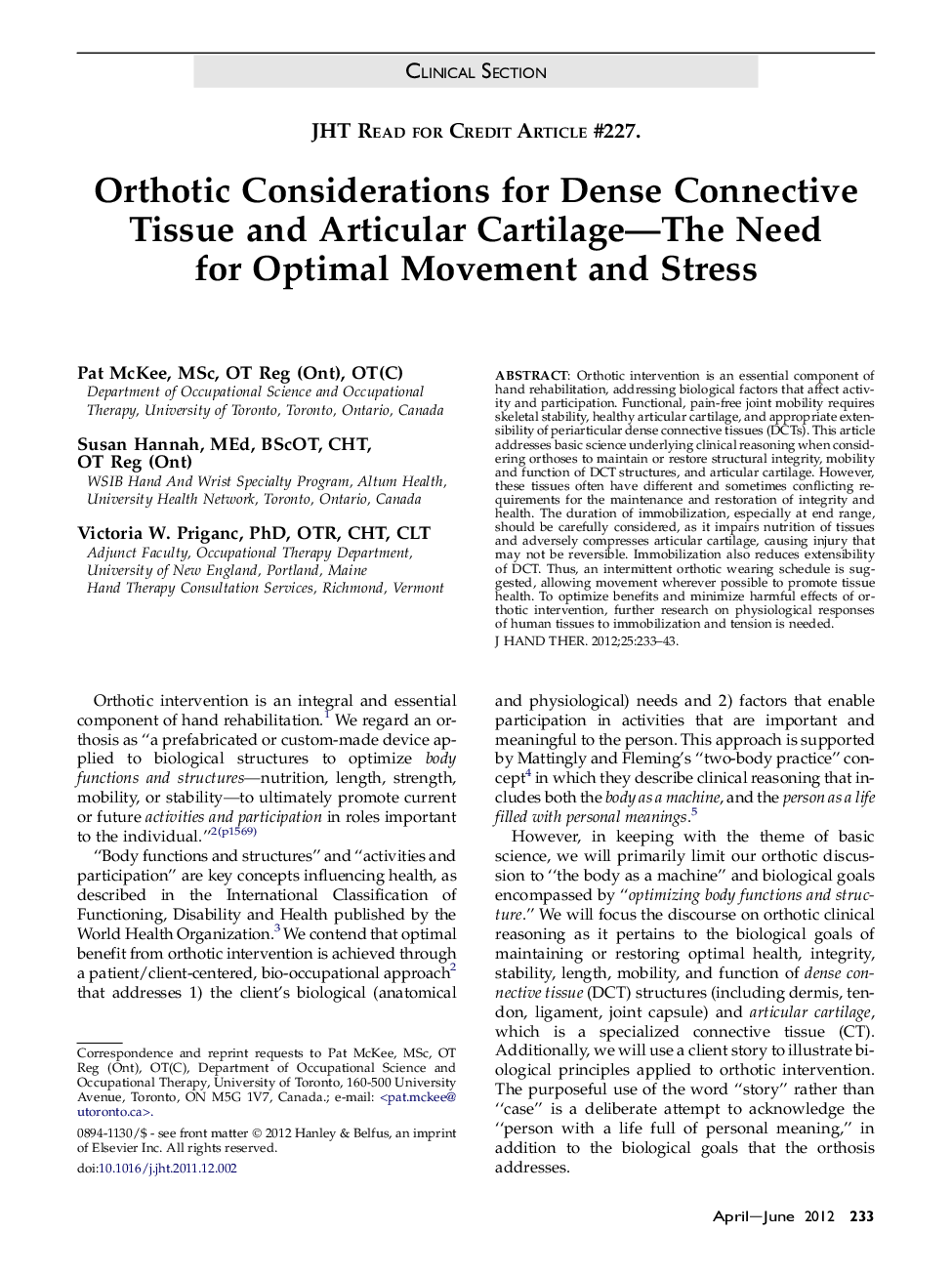| Article ID | Journal | Published Year | Pages | File Type |
|---|---|---|---|---|
| 2694959 | Journal of Hand Therapy | 2012 | 11 Pages |
Orthotic intervention is an essential component of hand rehabilitation, addressing biological factors that affect activity and participation. Functional, pain-free joint mobility requires skeletal stability, healthy articular cartilage, and appropriate extensibility of periarticular dense connective tissues (DCTs). This article addresses basic science underlying clinical reasoning when considering orthoses to maintain or restore structural integrity, mobility and function of DCT structures, and articular cartilage. However, these tissues often have different and sometimes conflicting requirements for the maintenance and restoration of integrity and health. The duration of immobilization, especially at end range, should be carefully considered, as it impairs nutrition of tissues and adversely compresses articular cartilage, causing injury that may not be reversible. Immobilization also reduces extensibility of DCT. Thus, an intermittent orthotic wearing schedule is suggested, allowing movement wherever possible to promote tissue health. To optimize benefits and minimize harmful effects of orthotic intervention, further research on physiological responses of human tissues to immobilization and tension is needed.
